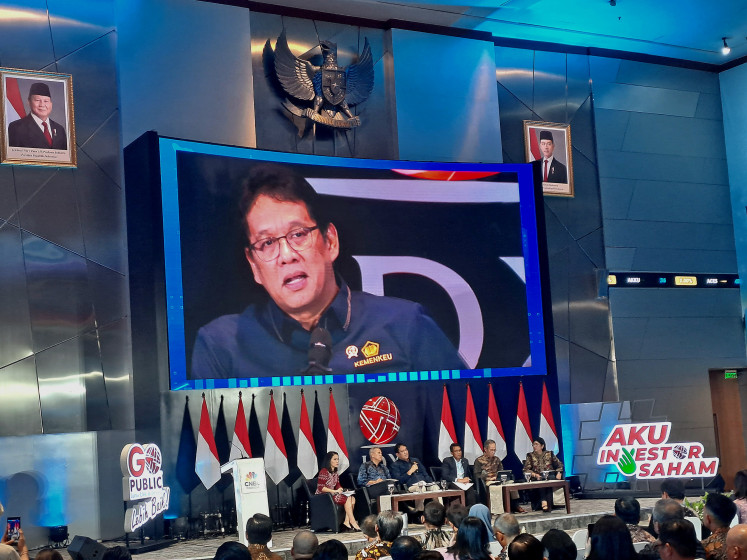Popular Reads
Top Results
Can't find what you're looking for?
View all search resultsPopular Reads
Top Results
Can't find what you're looking for?
View all search resultsPlanned US deployments aimed at China
Indonesia considers recently revealed additional US Navy deployment plans in the region as measures taken to balance Chinese rising influence
Change text size
Gift Premium Articles
to Anyone
I
ndonesia considers recently revealed additional US Navy deployment plans in the region as measures taken to balance Chinese rising influence.
The US Navy plans to deploy littoral combat ships (LCS) in Singapore and possibly in the Philippines, Reuters reported on Thursday, quoting Chief of Naval Operations Adm. Jonathan Greenert’s writings in the December issue of Proceedings, published by the US Naval Institute.
Indonesian Defense Ministry spokesman Brig. Gen. Hartind Asrin told The Jakarta Post that the planned deployment was aimed to balance China’s own military escalation.
“China has developed so much, both economically and militarily,” he said over the phone. “The Asia-Pacific region has experienced tremendous development and the US wants to keep the region in check.”
Hartind added the ministry would also closely follow the development of all plans.
University of Indonesia defense expert Andi Widjajanto emphasized that the new plans were part of efforts to anticipate increased Chinese military activity in the South China Sea.
“During Obama’s tenure, there are four main strategies that are being deployed,” he said by SMS.
First is revitalizing the traditional US corridor in East Asia relying on Guam, Okinawa and South Korea.
Second, supporting Australia’s strengthened role in Asia through the Darwin corridor, which means supporting Canberra’s 1,000-nautical mile exclusive zone, which was first suggested by then prime minister John Howard on Dec. 16, 2004.
“The third strategy is initiating the Indo-Pacific corridor by including an Indian naval base in Andaman-Nicobar as part of the US maritime architecture in the Indian and Pacific oceans,” Andi continued.
The fourth strategy is strengthening states with littoral capacities and access to the South China Sea, such as Singapore and the Philippines.
“The US is intensifying its capacity building efforts following an August sea trial of China’s carrier in the South China Sea,” Andi said.
Reuters quoted Greenert as saying that the Navy will increasingly focus on the strategic “maritime crossroads” of the Asia-Pacific region.
He said the navy planned to “station several of our newest littoral combat ships at Singapore’s naval facility”, in addition to plans announced by President Barack Obama for marines to be based in Darwin beginning next year.
“This will help the navy sustain its forward global posture with what may be a smaller number of ships and aircraft than today,” he wrote.
Littoral combat ships are shallow draft vessels that operate in coastal waters and can counter coastal mines, quiet diesel submarines and fast, small armed boats.
Greenert wrote the ships would focus on the South China Sea, conducting operations to counter piracy and trafficking, both of which are endemic in the area.
“Similarly, 2025 may see P-8A Poseidon aircraft or unmanned broad area maritime surveillance aerial vehicles periodically deployed to the Philippines or Thailand to help those nations with maritime domain awareness.”
The disputed ownership of the oil-rich reefs and islands in the South China Sea is one of the greatest security threats in Asia. The sea is claimed wholly or in part by China, Taiwan, the Philippines, Malaysia, Vietnam and Brunei.










